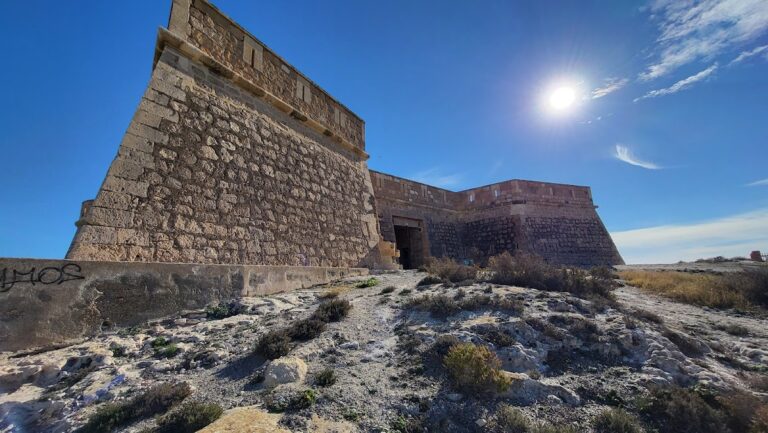Castillo de Guardias Viejas: An 18th-Century Coastal Fortification in Spain
Visitor Information
Google Rating: 4.5
Popularity: Medium
Google Maps: View on Google Maps
Official Website: www.juntadeandalucia.es
Country: Spain
Civilization: Unclassified
Remains: Military
History
The Castillo de Guardias Viejas is a coastal fortification located near the municipality of El Ejido in Spain. It was built by Spanish authorities in the late 18th century as part of a broader effort to defend the coastline against pirate attacks and corsairs.
Construction of the castle began around 1769 during the reign of King Carlos III. This followed a royal decree issued in 1764 aimed at establishing a network of coastal defenses along vulnerable points in Spain’s southern territories. The fortification was designed by the military engineer José Crame from the Kingdom of Granada, who was also responsible for other nearby coastal batteries such as the Castillo de San Felipe at Los Escullos.
The castle’s military importance was underscored during the Spanish War of Independence between 1808 and 1814. In a strategic move to deny its use to occupying forces, the English army destroyed the castle to prevent it falling into French hands. After the conflict ended, the fort was rebuilt in 1817 to restore its role in safeguarding the coastline.
Throughout its operational life, the castle was garrisoned by cavalry units who patrolled the coastal zone stretching between Punta del Sabinar and Balanegra. Its artillery coverage overlapped with that of the adjacent Torre de Balerma to the west, forming a defensive network. Besides its military function, the castle also contained a chapel and living quarters for its chaplain, indicating a religious presence within the garrison.
In the late 20th century, the Castillo de Guardias Viejas underwent significant restoration. It was declared a Bien de Interés Cultural—a protected cultural heritage site—by the Spanish government in 1985. Ownership of the property falls under the regional authority known as the Junta de Andalucía, and from the early 2000s onward, the castle has been repurposed to host exhibitions and cultural events, linking its historic legacy with contemporary activities.
Remains
The Castillo de Guardias Viejas is built on a low rocky outcrop overlooking the Mediterranean Sea, positioned approximately 31 meters above sea level. Its design follows a quadrangular layout centered around an open courtyard, traditionally called a patio de armas, which served as a gathering and organizational space within the fortification.
Access to the interior was controlled by a moat that surrounded the castle, crossed via a drawbridge at the main entrance. This defensive feature was common in coastal batteries to impede attackers and provide a first line of defense.
Inside the walls, the structure contains several vaulted rooms featuring barrel vaults—arches shaped like half cylinders. These spaces included separate barracks for infantry and cavalry units, stables for horses, a storage area for gunpowder, a chapel for worship, and living quarters assigned to the chaplain. Steps from the courtyard lead to the roof terrace, known locally as the terrado, which offered vantage points for surveillance and artillery operation.
The artillery battery itself is notable for its semicircular shape facing east toward the coastline it was tasked to protect. This battery was equipped with four large cannons, each capable of firing 24-pound cannonballs. A ramp provided access to the battery, facilitating the movement of artillery pieces and ammunition.
Today, the castle reflects both its original defensive purpose and later restoration efforts, preserving the key features that illustrate its military function during the 18th and 19th centuries. The combination of defensive elements—such as the moat and drawbridge—with living and operational quarters paints a detailed picture of life within a coastal battery designed to guard against seaborne threats.










